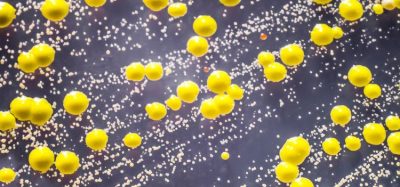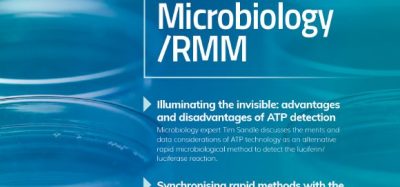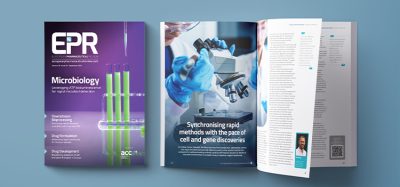The latest trends in pharmaceutical microbiology
Posted: 26 April 2018 | Jeanne Moldenhauer (Excellent Pharma Consulting Inc) | No comments yet
There have been many changes in pharmaceutical microbiology as we progressed into the 21st century. Some of these changes have been due to the advance of rapid microbiological methods, knowledge gained from the study of the human microbiome, while others are changes to conventional testing methods. This paper discusses some of the recent changes in areas of interest to microbiologists.
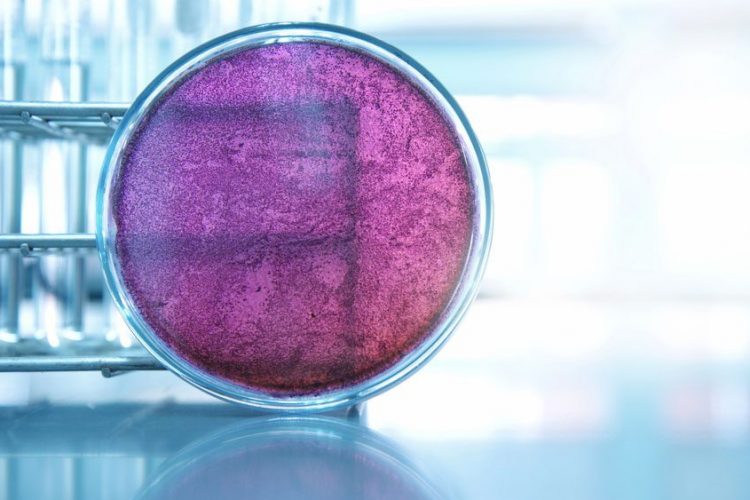

Media manufacturers have started to market new microbiological media; either selective for BCC, or media that will recover BCC (but is not selective). These media can be useful but should be evaluated to ensure whether they are or are not selective for BCC. In some cases, the existing types of media (eg, TSA, R2A, SDA) have also been shown to grow these organisms at the same rate.
The evaluation of rapid microbiological methods has led to the utilisation of other types of media than those that were traditionally used. One such example is the use of Schaedler blood agar with rapid sterility testing in the Milliflex rapid.7
Facilities used to manufacture antibiotics need to be able to neutralise the monitoring media utilised to ensure that if microorganisms are present they can be recovered. Different enzymes are needed depending upon the type of antibiotic. Additionally, sterility testing of antibiotics also requires neutralisation to allow contaminants present to grow. Another advance in culture media relates to use of enzymes to inactivate various antibiotics. This is important to ensure Traditionally, β-lactamases were readily available to add to culture media. Today, a variety of media are available with the enzymes already incorporated into the media, eg, specific betalactamases for use with penicillins, cephalosporins (first to fifth generation) and carbapenems.8
Alternative or rapid microbiological methods
While many rapid methods have been introduced in the past 20 or 30 years, the route to implementation has been slow. It does not diminish the importance of these methods. It appears that the implementation of these systems in water testing is moving forward. This allows for almost all water testing to be released in real time. While endotoxin testing is not necessarily real-time, the handheld units can provide results in near-real time.
Identification systems
[bf] There have been many advances in the methods available for “rapid” identification testing. Today, both identification testing and strain typing can be performed using automated systems.
Pathogen detection
Sandle9 provides an overview of several new methods for rapid pathogen detection. He indicates that rapid is probably not a good term to use, as it is subjective. It is probably better to refer to these methods as an alternative. Diagnosing diseases sooner is a key concern of many clinical laboratories, as is the determination of the appropriate level of antimicrobial to prescribe. A prototype chip is available that uses two nanoliters of volume to determine whether any of several antimicrobials are effective against a microbe.
Other tests include C-reactive protein (CRP) blood tests to show if an infection is present. This test is based upon the correlation of inflammation in the body. 9
Avian influenza is a major epidemiological concern. A new biosensor has been developed to determine whether this virus is present in blood samples in about three minutes. This method uses gold nanoparticles that allow the viral particles to be detected with a nanobiosensor. 9
qPCR methods have also been developed to detect pathogens.9 Other non-molecular assays, like immunoassays, have also been developed for the detection of pathogens.10
Antibiotic resistance / sensitivity
Professor Jϋrgen Popp, of the Leibniz-IPHT discusses the use of Raman spectroscopy to provide a rapid result (under two hours) to determine whether a bacterial strain is resistant or sensitive to an antibiotic. Furthermore, one can obtain information on the concentration of antibiotic needed to constrain bacterial growth.11
Molecular assays have been developed for quick detection of antibiotic resistance. Chromogenic agars can be an inexpensive option in place of molecular assays.10
Biography
Jeanne Moldenhauer, Vice-President of Excellent Pharma Consulting, has more than 30 years’ experience in the pharmaceutical industry. She chaired the Environmental Monitoring / Microbiology Interest Group of Parenteral Drug Association for more than 15 years, served on the Scientific Advisory Board of PDA for 20 years, founded the Rapid Microbiology User’s Group, and is a member of American Society for Quality, and Regulatory Affairs Professionals Society. She is the author of many books and numerous publications, including book chapters and magazine articles.
References
- Agalloco JP (2015), The Human Microbiome Project and Pharmaceutical Quality Control Microbiology, Pharmaceutical Technology 39 (4). Downloaded from: http://www.pharmtech.com/human-microbiome-project-and-pharmaceutical-quality-control-microbiology on March 26, 2018.
- Espinoza, JL (2018), Machine learning for tackling microbiota data and infection complications in immunocompromised patients with cancer. #It# Journal of Internal Medicine #itend# 10:1111.
- Carbol J, Tan PI, Varma Y, Osborne DW, (2018) Formulating Topical Products Containing Live Microorganisms as the Active Ingredient: Case Studies Compare Efficacy Testing of Preservatives for Topical Formulations with Probiotic Actives. Pharmaceutical Technology 42(3): 32-36
- Anonymous (2018c) Fecal Transplant. Gastroenterology and Hepatology. Johns Hopkins Medicine. Downloaded from: https://www.hopkinsmedicine.org/gastroenterology_hepatology/clinical_services/advanced_endoscopy/fecal_transplantation.html on March 26, 2018.
- Ensor LA, (2017) Microbiological Quality Considerations in Non-sterile Pharmaceutical Product Manufacture. Presented at the 2017 Pharmaceutical Microbiology Conference in Porto, Portugal.
- Metcalfe JW, (2017) CDER Case Study: A Microbial Investigation of Contamination by Burkholderia multivorans. Presented at the 2017 Pharmaceutical Microbiology Conference in Porto, Portugal.
- Gray JC, Staerk A, Berchtold M, et al (2010) Growth-promoting Properties of Different Solid Nutrient Media Evaluated with Stressed and Unstressed Micro-organisms: Prestudy for the Validation of a Rapid Sterility Test. PDA J Pharm Sci and Tech 64: 249-263.
- Anonymous (2018) Enzymes for Culture Media. Downloaded from: http://www.emdmillipore.com/US/en/products/industrial-microbiology/culture-media/culture-media-for-pharmaceutical-and-cosmetics-industry/ready-to-use-media/enzymes-for-culture-media/jLqb.qB._P8AAAFAC_1kiQpx,nav on March 22, 2018.
- Sandle T, (2015) Advances in Rapid Pathogen Detection. J. Microbiol. Exp. 2(5): 00063.
- Forbes BA, (2018) Laboratory Advances for Infection Control. Cancer Therapy Advisor. Downloaded from: https://www.renalandurologynews.com/hospital-infection-control/laboratory-advances-for-infection-control/article/599135/ on March 25, 2018.
- Anonymous (2018b) Scientists develop a rapid test that could revolutionize diagnostics of infectious diseases. Medical. Lifesciences. Downloaded from: https://www.news-medical.net/news/20180314/Scientists-develop-rapid-test-that-could-revolutionize-diagnostics-of-infectious-diseases.aspx on March 26, 2018.
The rest of this content is restricted - login or subscribe free to access
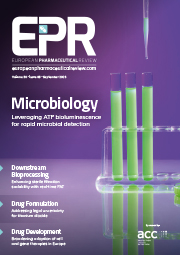

Why subscribe? Join our growing community of thousands of industry professionals and gain access to:
- bi-monthly issues in print and/or digital format
- case studies, whitepapers, webinars and industry-leading content
- breaking news and features
- our extensive online archive of thousands of articles and years of past issues
- ...And it's all free!
Click here to Subscribe today Login here




